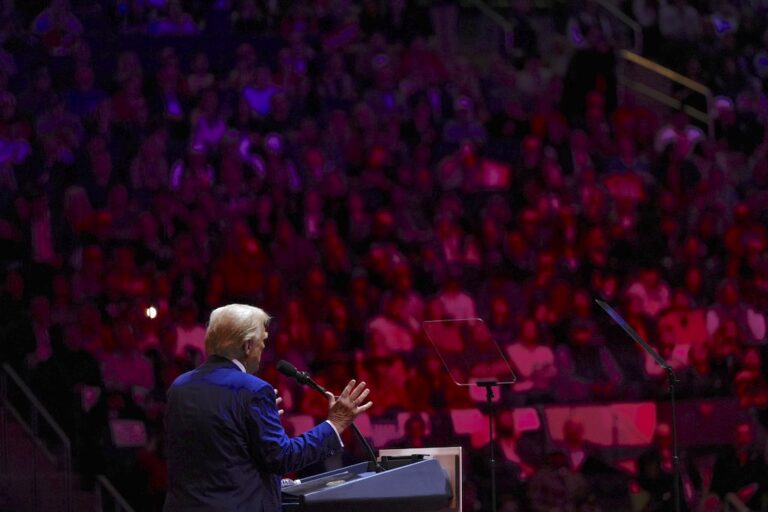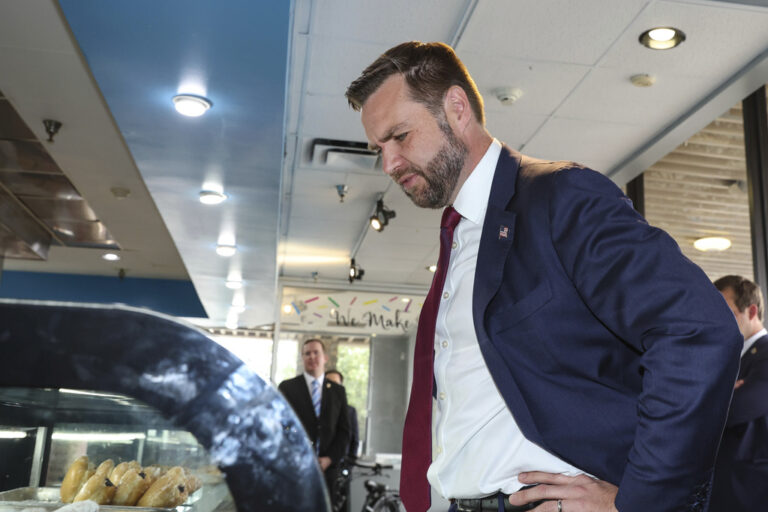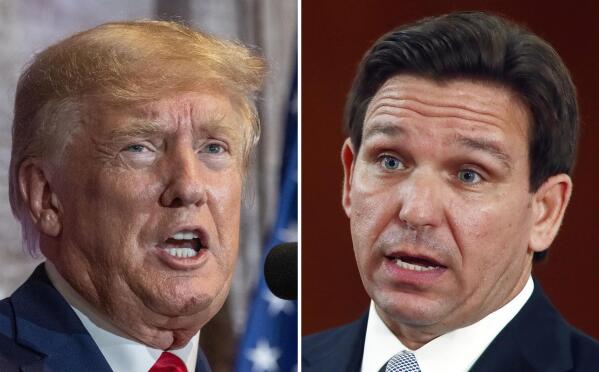
“Call Her Daddy” host, Alex Cooper, welcomed Vice President Kamala Harris to her podcast on Oct. 6. Currently sitting at No. 1 on Spotify’s “Top Podcast” chart, “Call Her Daddy” was created in 2018 by Cooper and her roommate, Sofia Franklyn, with the ultimate goal of empowering other girls and creating a “sex-positive” space. The episodes usually involve the women sharing their sex lives and relationship advice as women in New York City.
Given the podcast’s origin, Harris’ appearance was an unexpected episode given that Cooper’s guests are typically influencers and celebrities, including Katy Perry, Miley Cyrus, and Post Malone. The 40-minute episode primarily focused on Harris’ upbringing, women’s rights, and arguments from the right questioning Harris’ qualifications as a candidate.
Within a week, “Call Her Daddy” posted three Instagram promotions for the episode, accumulating over 50,000 comments across the three posts — averaging just under 17,000 comments per post. While engagement on “Call Her Daddy’s” Instagram greatly varies depending on guests, within the past few months they have received at most 8,000 comments on singular posts (for Love Island star Leah Kateb) while some posts only receive around 60 comments. Harris’ appearance on the show led to a much different reaction. However, many of these comments were not positive. Comments were filled with fans denouncing their support for Cooper and Harris writing, with many writing “TRUMP 2024” and one going as far as to call the show “Call her Propaganda.”
Not only are fans claiming this was a poor decision on Cooper’s end as she risks losing fans supporting the Republican party, but many are also arguing that it was the wrong decision for Harris. A podcast about women detailing their sex lives? Many Democrat voters are arguing over Harris’ choice to go on the podcast, claiming the podcast’s reputation harms Harris’ credibility and integrity. This is especially important as Harris is the first first woman of color representing a major party in the election and is already not being taken as seriously as usual nominees due to misogyny and racism.
Still, this is not the first time the vice president has made an unconventional choice to seek out the young vote. Ever since announcing her campaign less than three months ago, her team has taken an unorthodox approach to mobilizing Gen Z voters. For example, the Kamala HQ accounts that she has created across TikTok, X, and Instagram, which have amassed a total 7 million followers (not including her own personal Kamala Harris accounts) are reminiscent of musical artists’ marketing tactics like Harry Styles HQ and Taylor Nation. Kamala HQ, has been used to especially appeal to Gen Z fans as they portray Harris through memes and trends that Gen Z voters can relate to. For instance, over the summer when Charli XCX’s “Brat” album was released, many Gen Zers mimicked her bright green background and basic black font in creating their own memes. Kamala HQ took part as well, creating their own X banner in this aesthetic. While the meme is obvious to Gen Z, it left older generations questioning Harris’ campaign.
Harris isn’t the first president to be using unconventional campaign methods. When former President Barack Obama originally ran in 2008 he, too, marketed himself to youth. While it may seem standard now, Obama sent texts and emails to younger voters and supporters to update them on the election. He also created a website where young voters could learn more about him as a candidate and interact with each other. Despite the practices being untraditional at the time, ultimately it seemed to work in his favor, as he won the 2008 and later 2012 election. There is no doubt Obama set the standard. Now, sending emails, texts, and having an internet presence is absolutely necessary for any candidate to run.
Ultimately, Harris is doing the same thing. She too is moving the needle. As Gen Z reaches the voting age, Harris is watching the younger generation, seeing what appeals to us, and meeting us where we already are. Historically, young people have been the least likely group to vote in elections. The New York Times found that “fewer than half of Americans 18 to 29 voted in the 2016 presidential election.”
We are the most important group to be voting. We will live with these decisions the longest. Issues like women’s rights, climate change, and gun control are just some challenges that have seen worrisome outcomes — whether that be women dying from lack of healthcare, the increase of natural disasters, or increase in school shootings. Ultimately, if we do not mobilize to vote for the right candidate, these issues will only persist.
Thus, Harris’ attempt to appeal to Gen Z is necessary, and it’s working. A Harvard Institute poll revealed “Harris leads overall among voters under 30, 61 percent [Harris] to 30 percent [Trump].” However, for Harris to see the results on Nov. 5, she must continue appealing to her young audience — and make sure they turn out to the polls.
The Zeitgeist aims to publish ideas worth discussing. The views presented are solely those of the writer and do not necessarily reflect the views of the editorial board.



